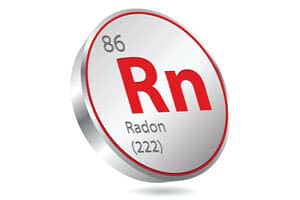What is Radon?

The Surgeon General has warned that radon is the second leading cause of lung cancer in the United States today. Only smoking causes more lung cancer deaths. If you smoke and your home has high radon levels, your risk of lung cancer is especially high.
While questions still remain over the quantities and length of exposure, radon concerns are a fact of home ownership. Most residential real estate transactions require radon testing, and many states require radon mitigation for new construction.
Scientists are more certain about radon risks than risks from most other cancer-causing substances.
Radon is a colorless, odorless, gas that decays into radioactive particles that can get trapped in your lungs when you breathe. As they break down further, these particles release small bursts of energy. This can damage lung tissue and lead to lung cancer over the course of your lifetime. Not everyone exposed to elevated levels of radon will develop lung cancer. And the amount of time between exposure and the onset of the disease may be many years.
Like most environmental pollutants, there is some uncertainty about the magnitude of radon health risks. However, we know more about radon risks than risks from most other cancer-causing substances. This is because estimates of radon risks are based on studies of cancer in humans.

How does it enter a home?
The gas moves from the soil into a home. Although it can seep directly through pores in concrete, the worst entry points are gaps in walls and floors. Any house, of any age, in any state can have elevated radon levels. It really depends on the way your specific house interacts with the surrounding soil. Your neighbor’s radon level may differ significantly from yours.
